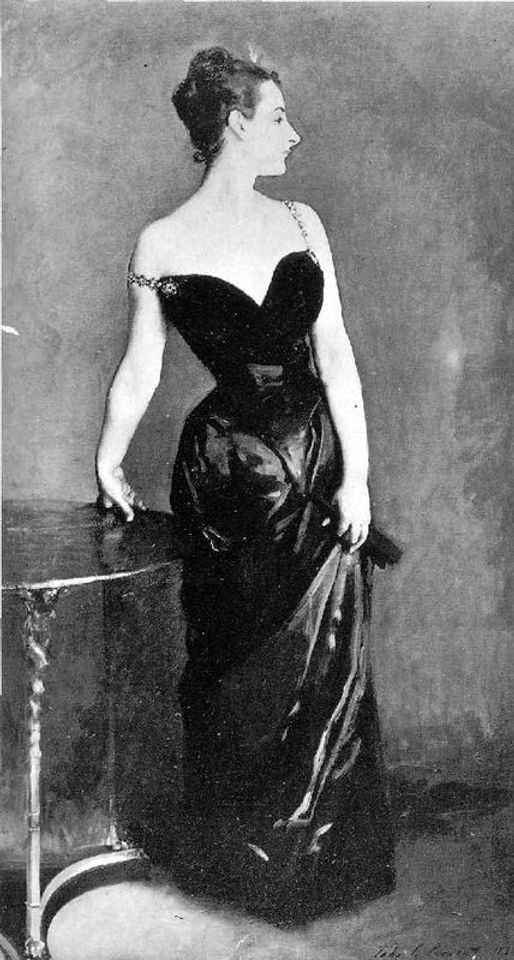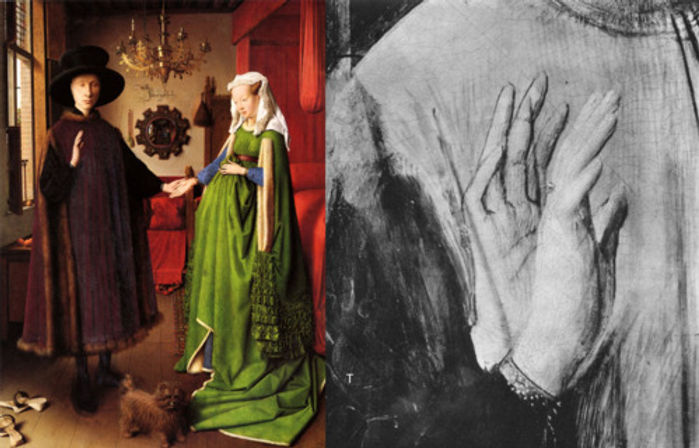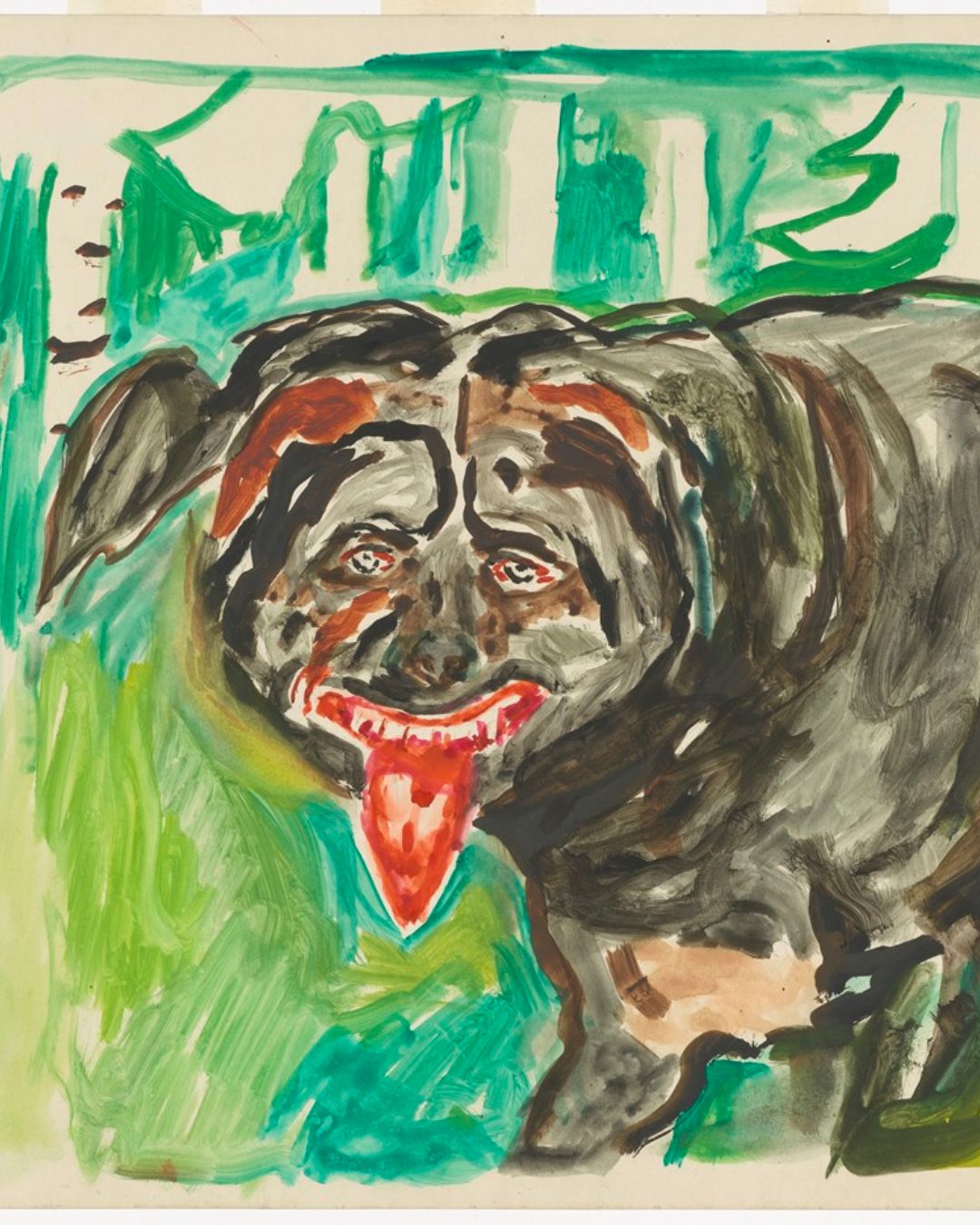How many times have you started working on a painting, disliked the direction it was going in and then decided to make changes on the same canvas? What if we tell you that through the invention of a simple time machine, people will be able to tell years later what your thought process was while you are painting now? What if we tell you that this “invention” is not new and has already led to fascinating discoveries?
Pentimento refers to the compositional changes made by an artist while painting. By the gradual erosion of the upper layer of paint over the years, these pentimenti reveal the works done earlier on the canvas. As it ages, old paint on canvas becomes transparent. For art conservators and art historians, this transparency can lead to the discovery of old stories hiding behind the artwork – showing alterations, original lines and structures that the artist changed during the process of painting – revealing the original intent with which the artwork was started, past making itself clearer as time goes on.
Now that we know that this is a fairly common phenomenon to happen, conservators also uncover a painting’s pentimento through infrared scans and X-rays allowing a thorough re-exploration of the past. Interestingly, the number of pentimenti in a painting can also be a part of its authentication process because copies don’t tend to have hidden changes. An artwork by Manet, Le déjeuner sur l’herbe, considered to be a copy at first was discovered to be an original preparatory work after the analysis of its pentimenti.
Jan van Eyck’s dilemma hidden by paint

Eyck is one of the earliest painters who indulged in underdrawings and pentimenti in his paintings. The X-ray of the Netherlandish artist’s famous artwork, The Arnolfini Wedding, has revealed changes in the position of one of the figure’s hands. In addition to this, several modifications in Arnolfini’s feet and leg area were revealed. After careful observation in the infrared photograph of his paintings, experts have also found pentimenti in various works like Madonna at the Fountain, Lucca Madonna and Portrait of Cardinal Niccolò Albergati, among others.
Pentimenti capture a frame of time that connect two versions of paintings made by an artist on the same canvas. It almost presents a step-by-step process of the journey of the paintings, disclosing innocent, embarrassing mistakes and corrections to remind us that no masterpiece was made in one attempt. One can roleplay the deliberations, doubts and insecurities of the artist as they dappled with the dilemma of deciding what deserves to stay in the painting.
John Singer Sargent’s fashion faux-pas

The word pentimento is Italian for repentance, from the verb pentirsi meaning “to repent”. It means to communicate that artists “repented” their choices made during the artistic process and tried to make changes over it so as to get the desired result. This emotion of repentance might not have been present for all artworks that have pentimenti, but it does for one particular painting.
Portrait of Madame X is considered to be a style icon for many. Posing gracefully in her black gown with an expanse of white skin, flaunting as she looks away, the painting was considered indecent and even unflattering in its time. The culprit was one of the shoulder straps of the dress that slipped off the model’s shoulder and hung loosely around her arm. Due to the shocked and scandalised response he got to his artwork, in a moment of self-doubt, Sargent painted over the subject to bring back the strap comfortably fastened around her shoulder.
Pablo Picasso’s secret experiments on the canvas

Pablo Picasso is famously known for the pentimento found in The Old Guitarist and The Blue Room. Due to a lack of art supplies during his “Blue Period”, Picasso often repurposed his canvas paintings and sometimes even used cardboard instead. Under the ghastly guitarist in The Old Guitarist– sitting in an unnatural pose, his neck close to snapping off – is a figure of a woman nursing a child in a pastoral setting. A preparatory drawing reveals his plans for the painting that he set out to make. It makes one wonder what series of events led to him abandoning the woman and painting an old guitarist on top which went on to become one of his most famous works.

A conservator first noticed inconsistencies in Picasso’s brushwork in the painting The Blue Room in 1954. Finally, in 1977, with adequate technology readily available, it was confirmed that the painting had another painting hidden underneath. This hidden painting was composed of a wealthy-looking man with a bow tie. It was only in 2008 that his earlier composition could be revealed in its accurate form with the help of an infrared camera. No one knows why Picasso deemed these earlier paintings unworthy to be kept as they were. It is a theory that, as a young 19-year-old artist, this was the time when he was trying to develop a signature style by experimenting with content.
Paul Cézanne’s unabashed acceptance of the painting process
Cézanne was one of the first artists to embrace the dynamic nature of art and deliberately include pentimenti in his drawings to enhance the three dimensional space as well as the expressive nature of his artworks. In an analysis of his paintings in the National Gallery, London, Elisabeth Reissner writes: “The initial underpainted drawing does not represent a contour to which Cézanne is committed, but is instead a first proposition for the edge of something, which will be repeatedly adjusted as the painting process proceeds. His process is not constrained by the decisions made at the early stages.”
With visible pentimenti in his artworks such as Bathers and An Old Woman with a Rosary, one can observe several alterations made in large areas. It is the artist’s peculiarity not to completely conceal the minor changes made in his works, keeping the ghost of his previous ideas alive. In many ways his paintings were also about the work and process of painting itself — he did not even scrape away unwanted paint, embracing the (almost) permanence of the craft.
Johannes Vermeer, Rembrandt and Leonardo da Vinci are some of the many artists whose works show the presence of a pentimento. This process has allured several artists over the years, the term being borrowed for non-painting purposes too, especially in the writing community. Furthermore, “palimpsest” is a similar term in textual studies that is given to a manuscript page from which text has been scraped or washed off only for the page to be reused for another document. This reusing and reworking during the creative process is familiar to all, the dynamism of art in our steady and restless hands waiting to be discovered one way or another.
Want to spot hidden artworks further? Read our blog about famous artworks in TV shows just waiting to be found!




